Abstract
1. The microviscosity of the axoplasm of can sciatic nerve was determined by an in vitro electron spin resonance (e.s.r.) method using the spin label tempone. To identify the spin label signal as one arising only from within the axoplasm, Ni2+ was used as a line broadening agent. In one series of experiments in nerves with sheath intact the Ni2+ ion was shown to eliminate the tempone signal arising from the surface water, and in another series of experiments, with the sheath slit, to eliminate the signal from the extracellular space as well. 2. A microviscosity of less than 5 centipoise (cP), i.e. 5x that of water, was determined for the axoplasm. Changes in the viscosity of the nerve axoplasm as a function of temperature over a range of 38 degrees down to 2 degrees C were seen to follow closely the viscosity change found for a water solution. 3. The microviscosity of nerve axoplasm and its change with temperature were related to axoplasmic transport of material in nerve fibres. The results were used to exclude a large increase in viscosity at low temperatures as the cause for the cold-block of fast axoplasmic transport.
Full text
PDF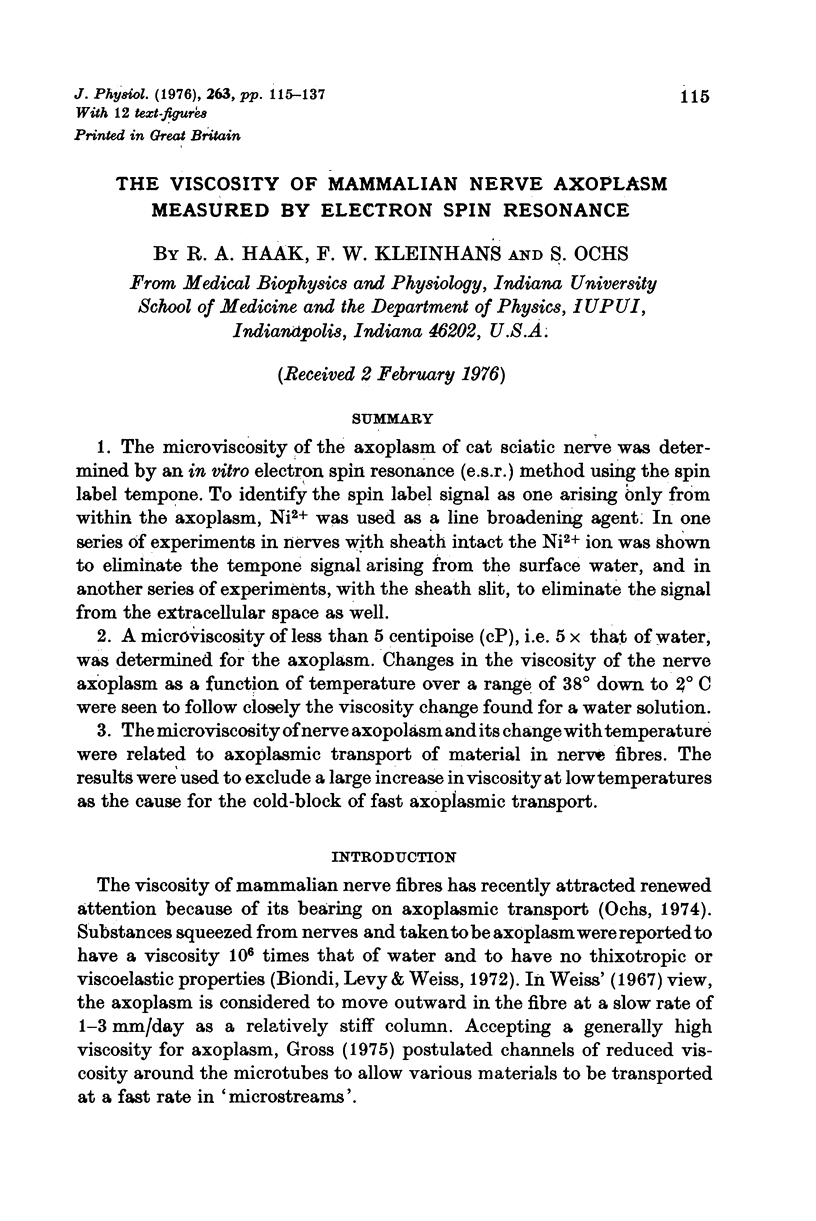
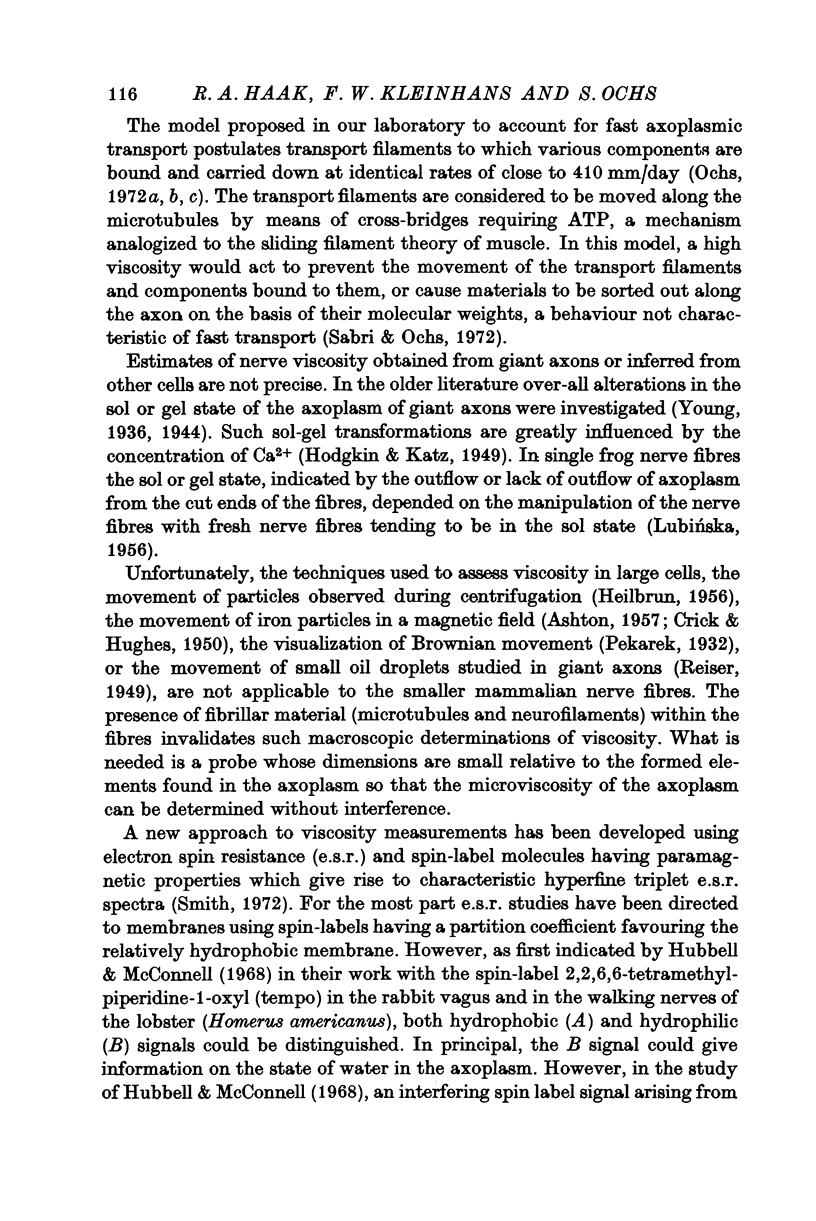
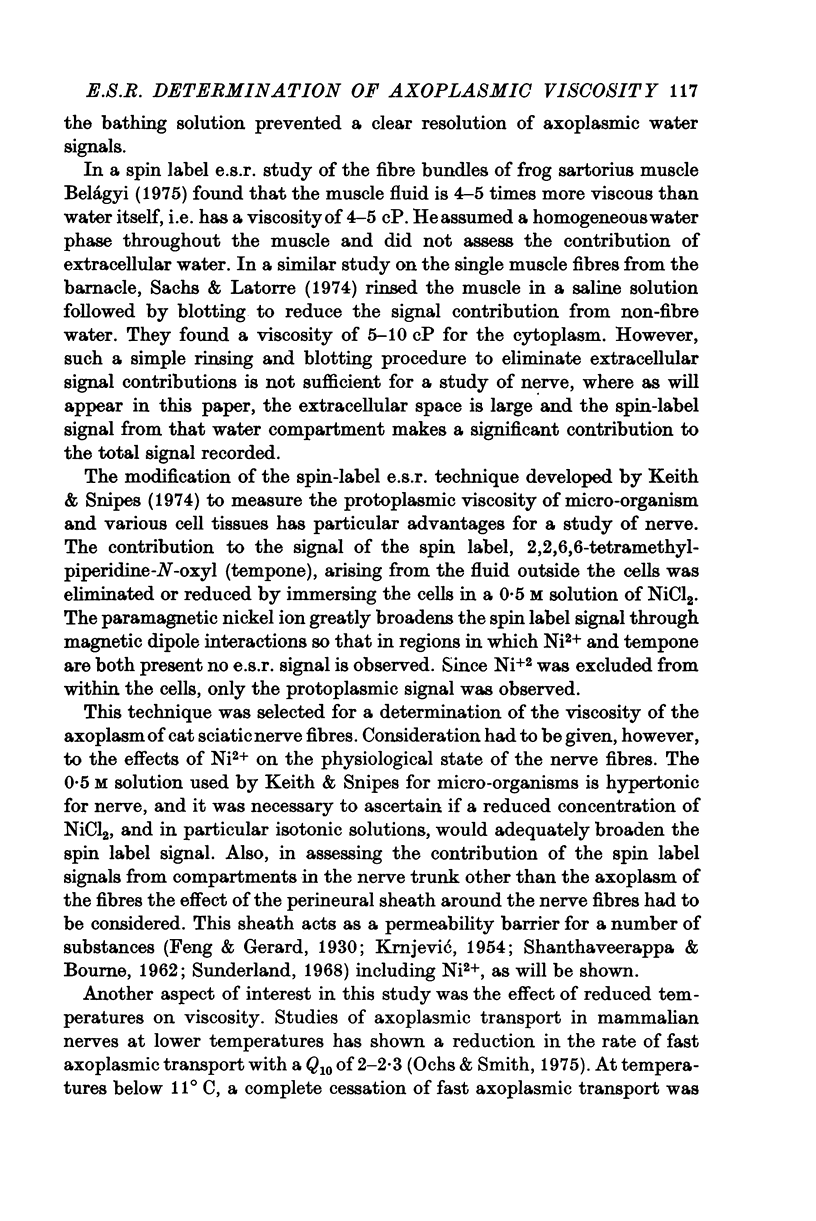
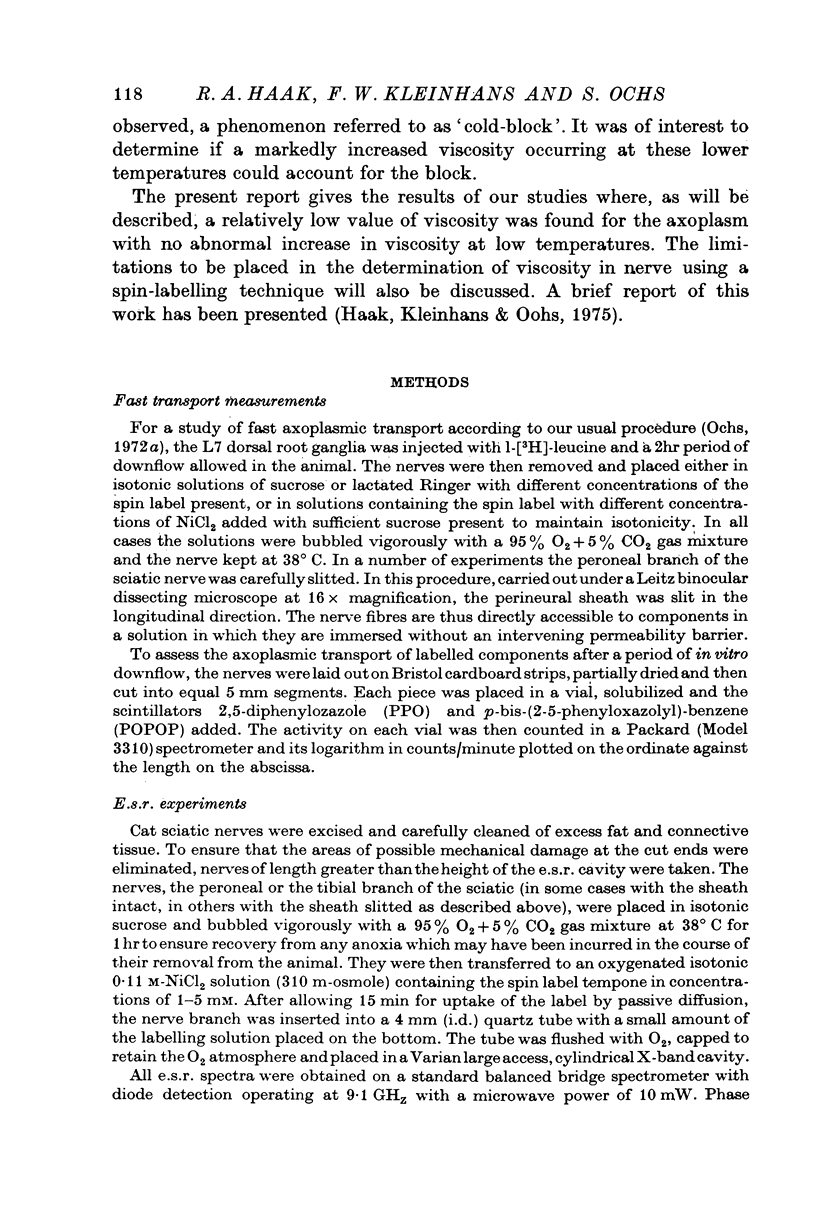
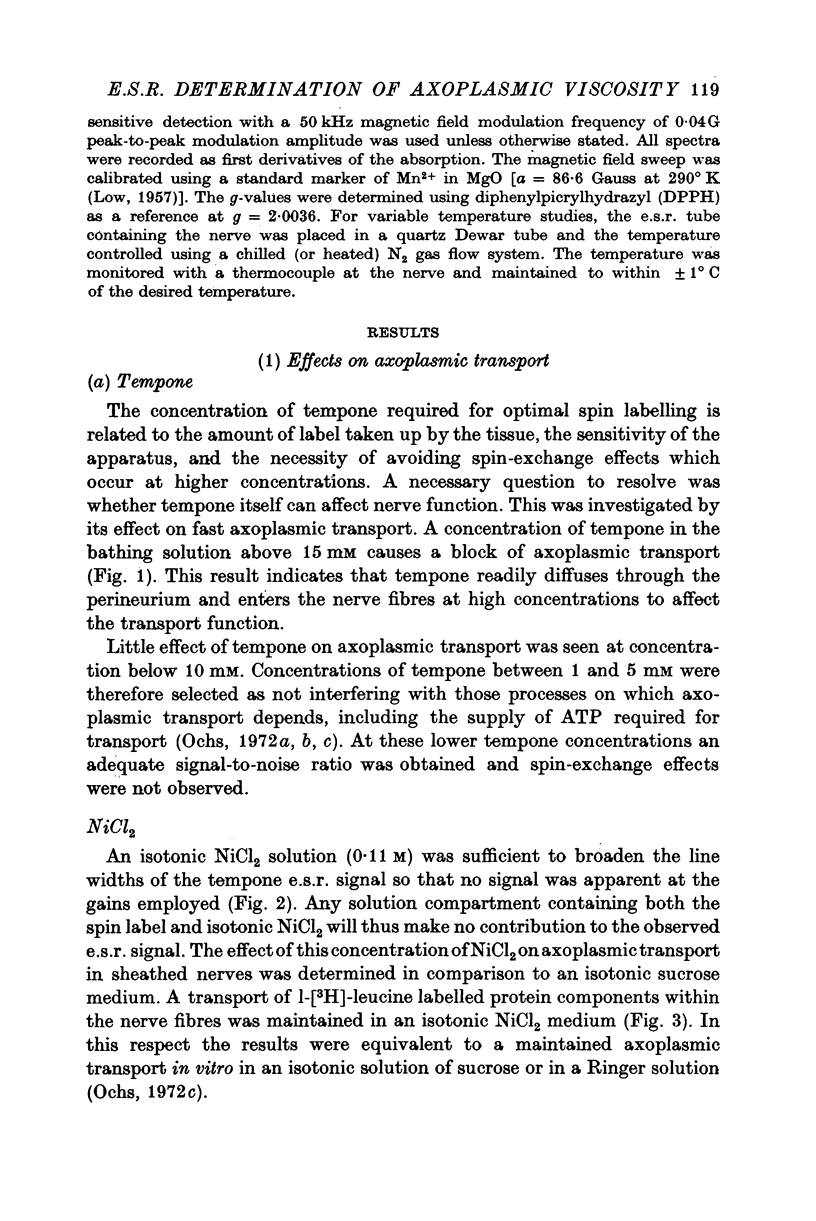
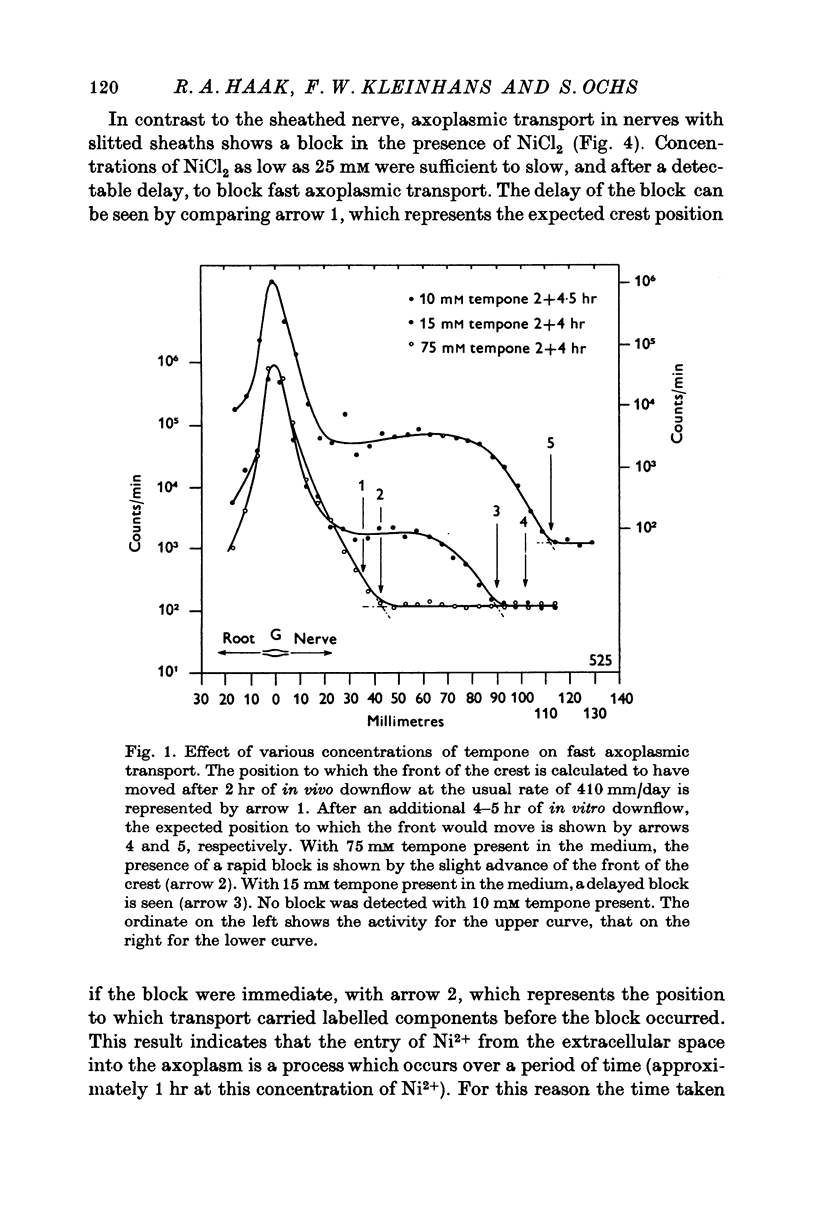
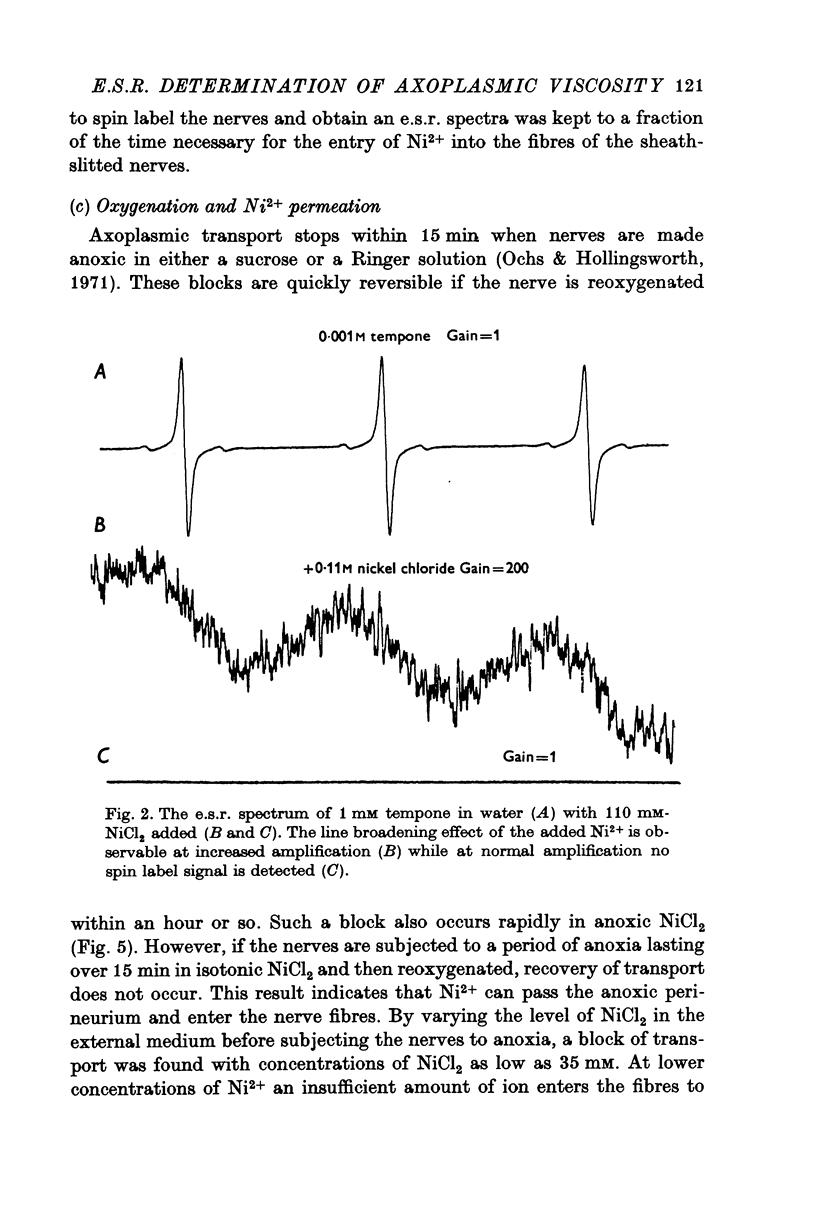
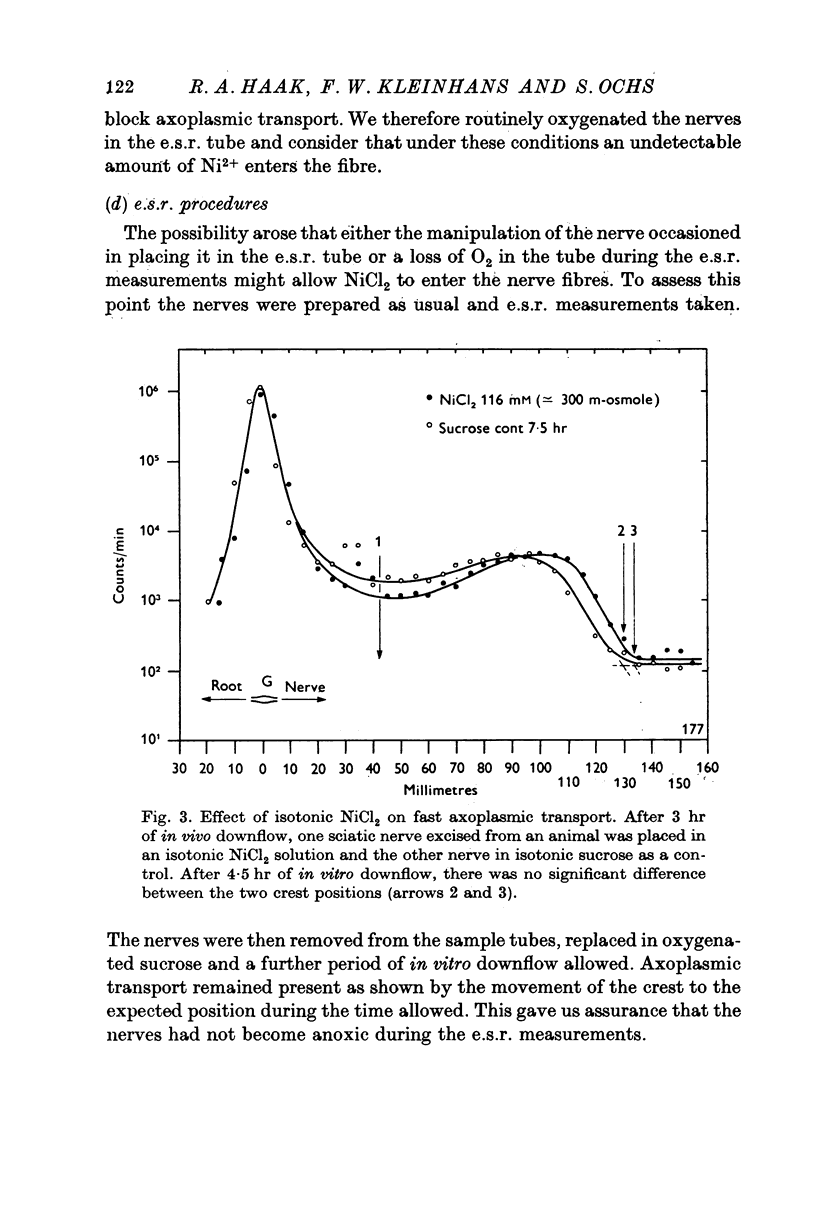
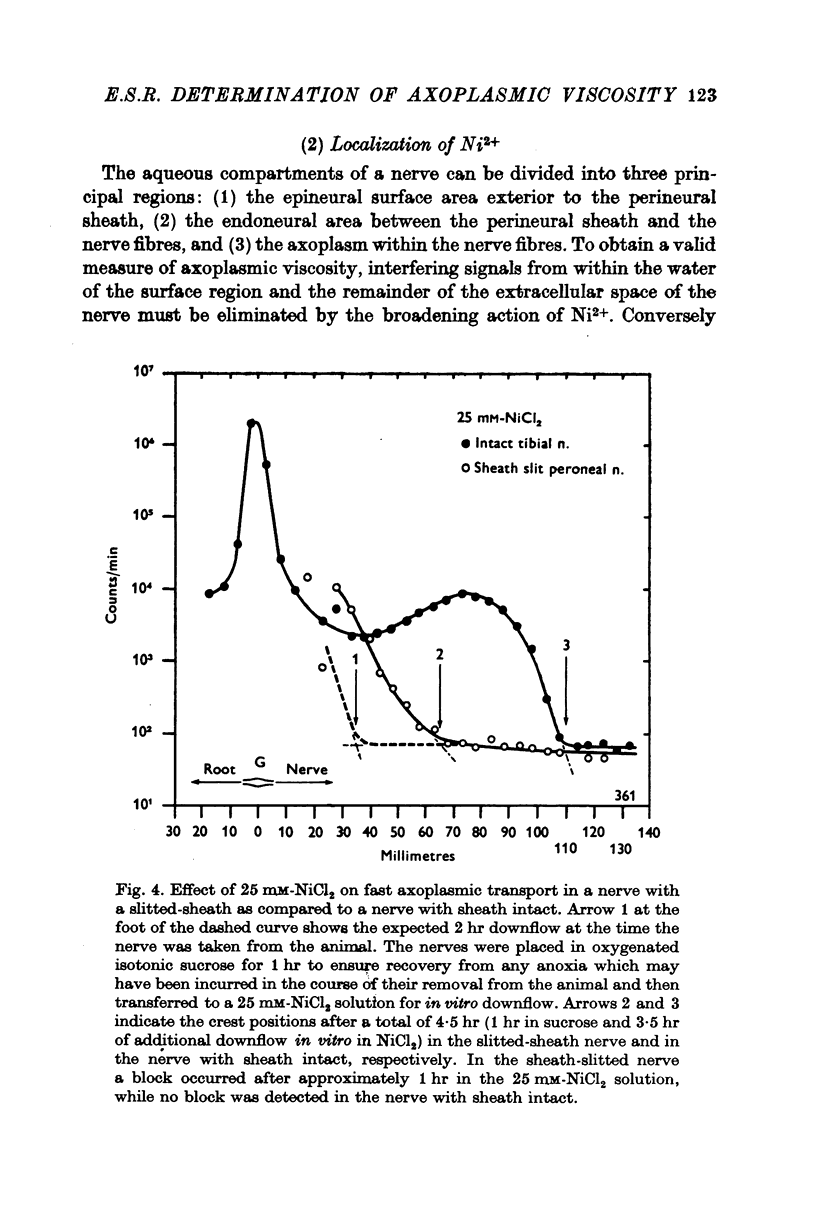
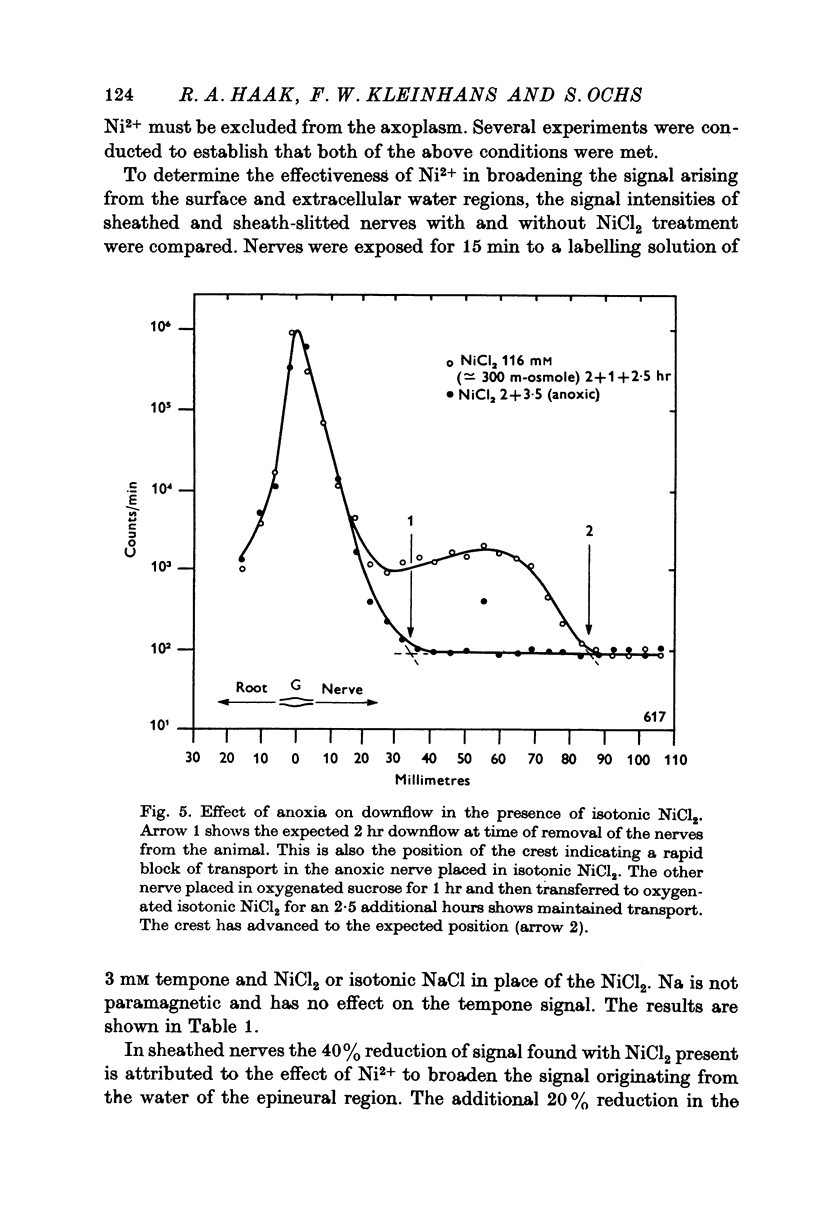
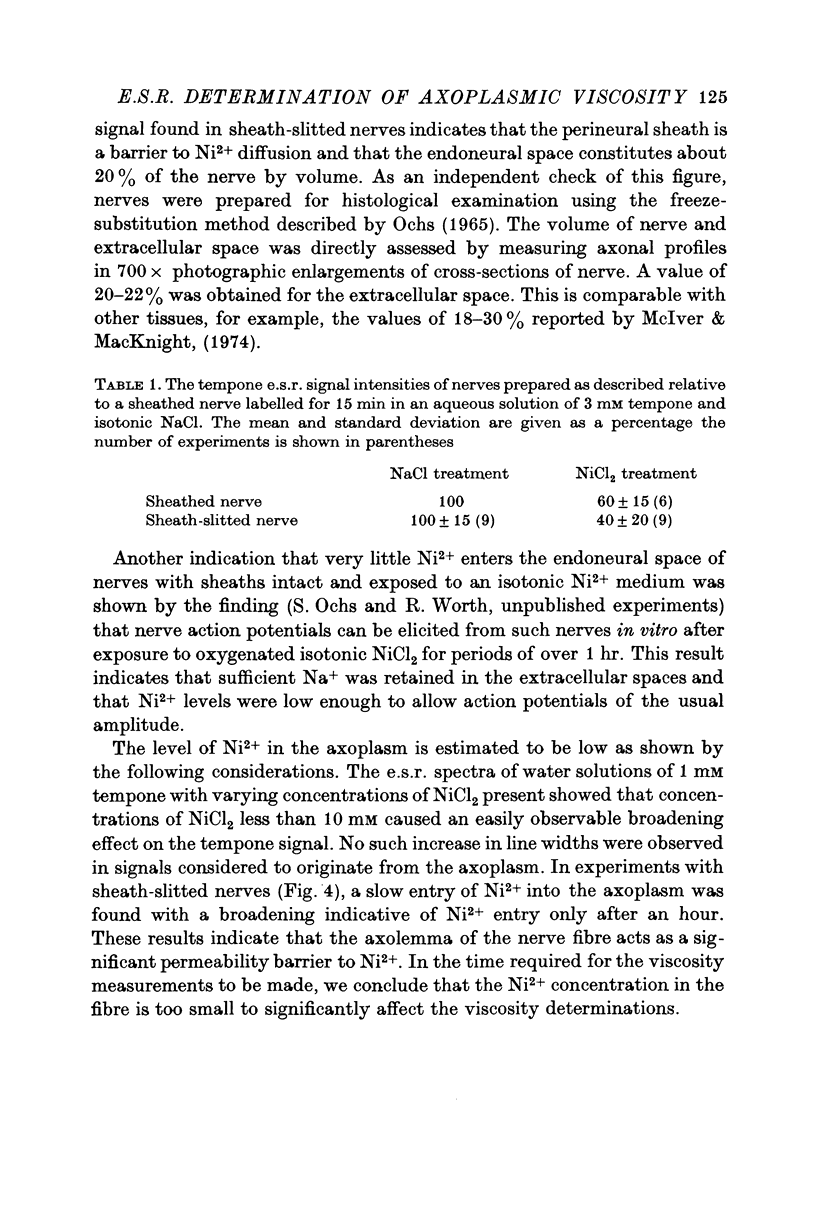
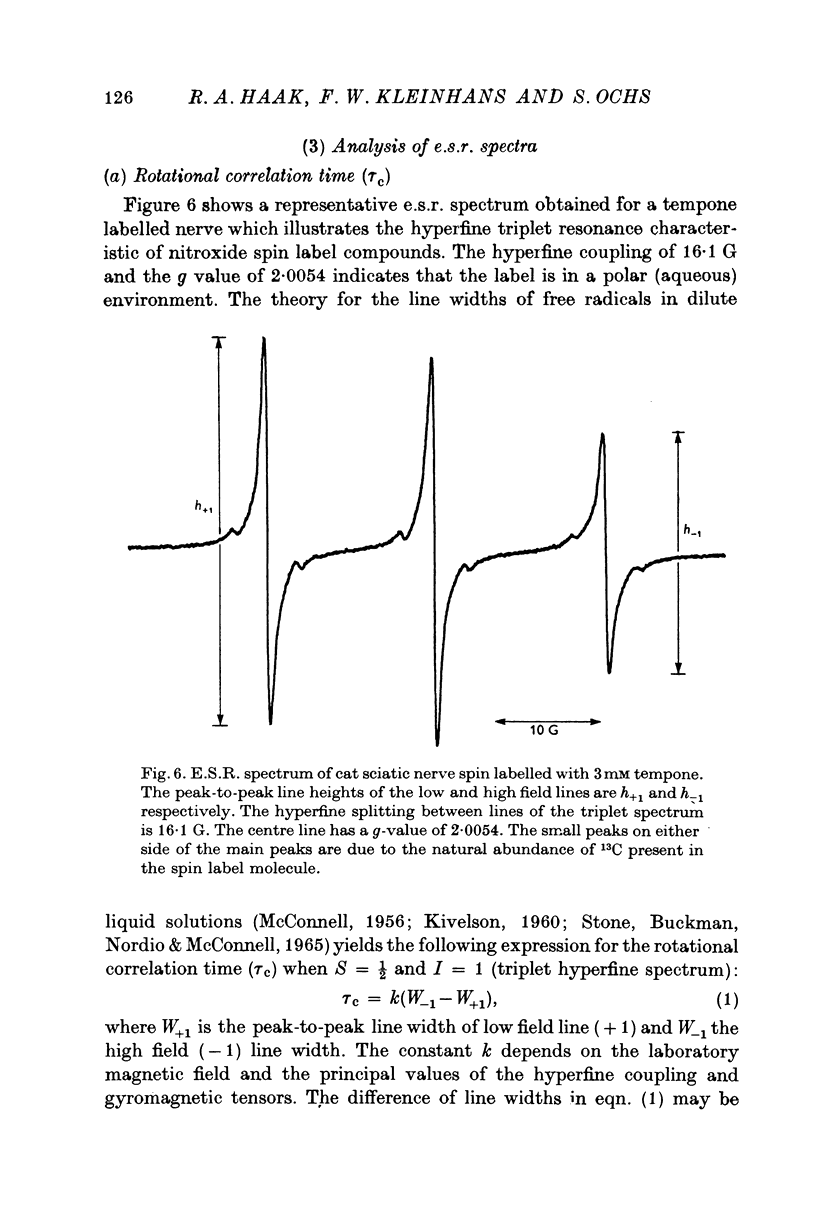
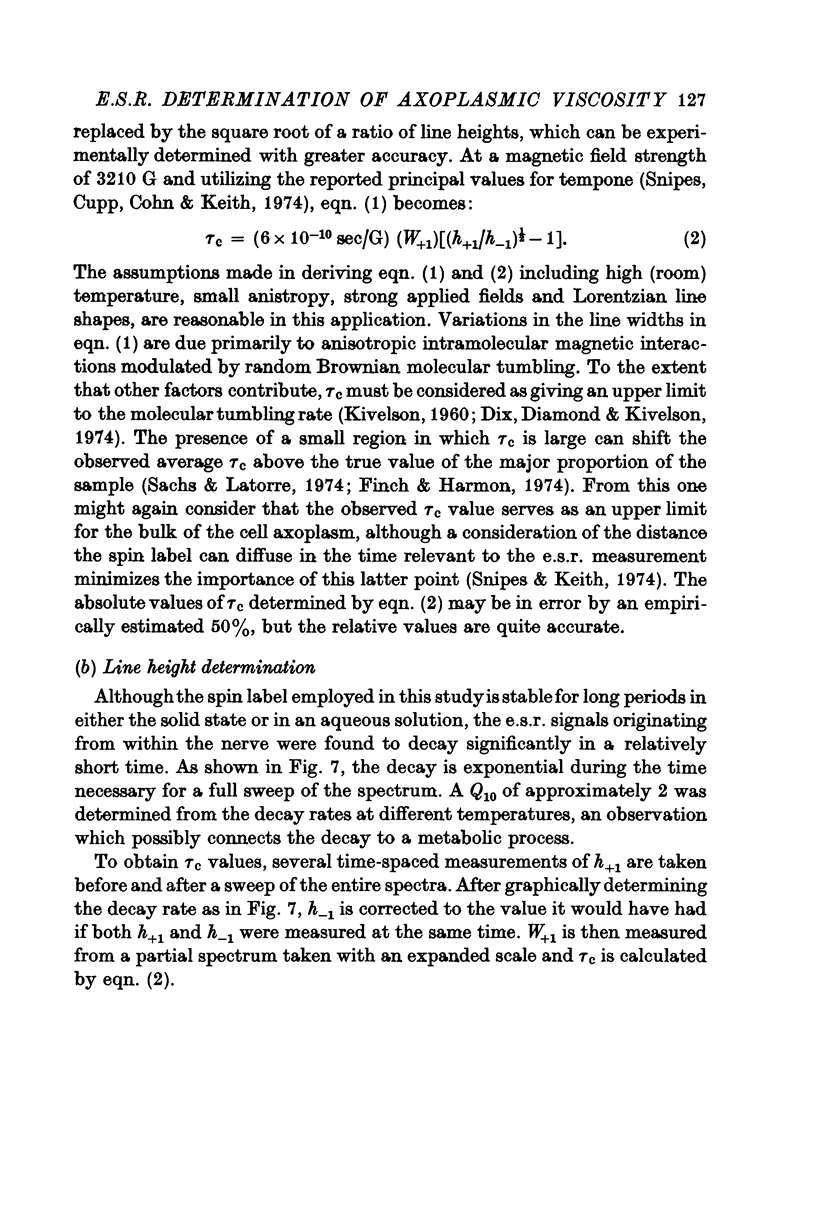
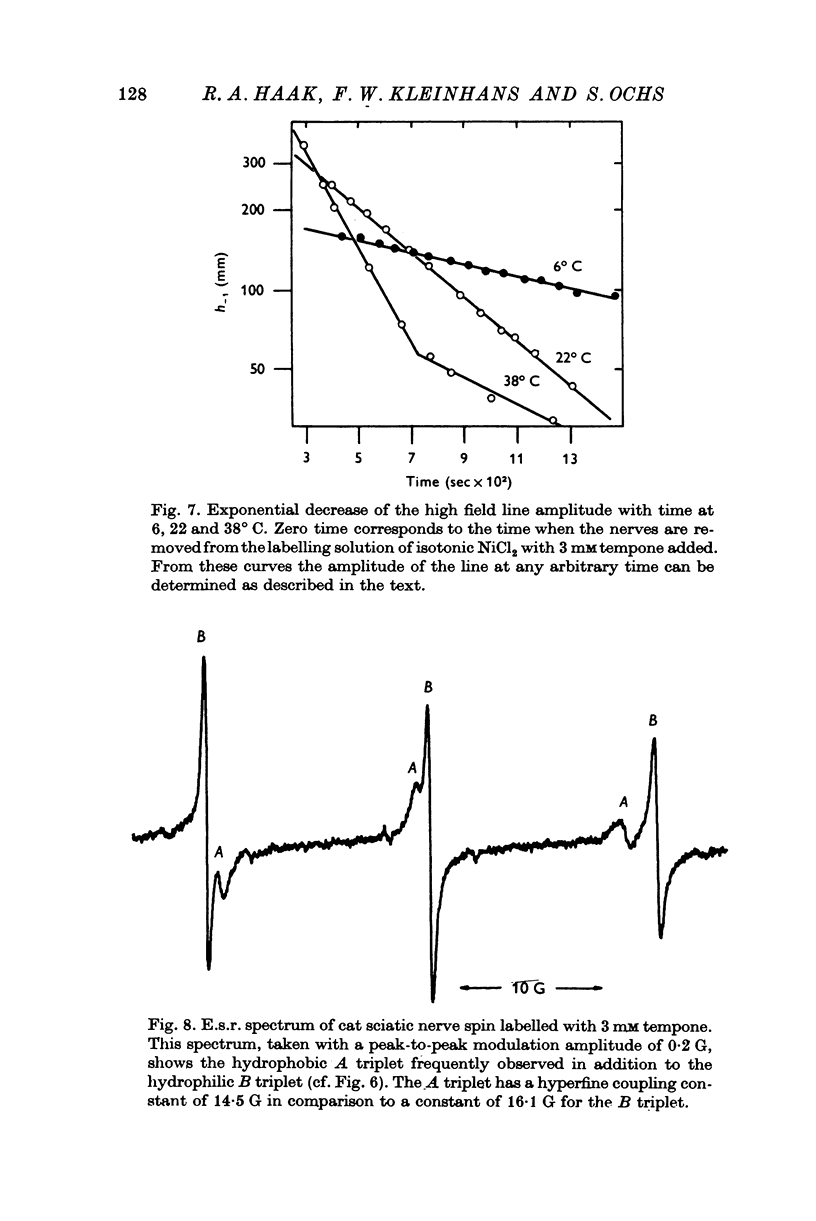
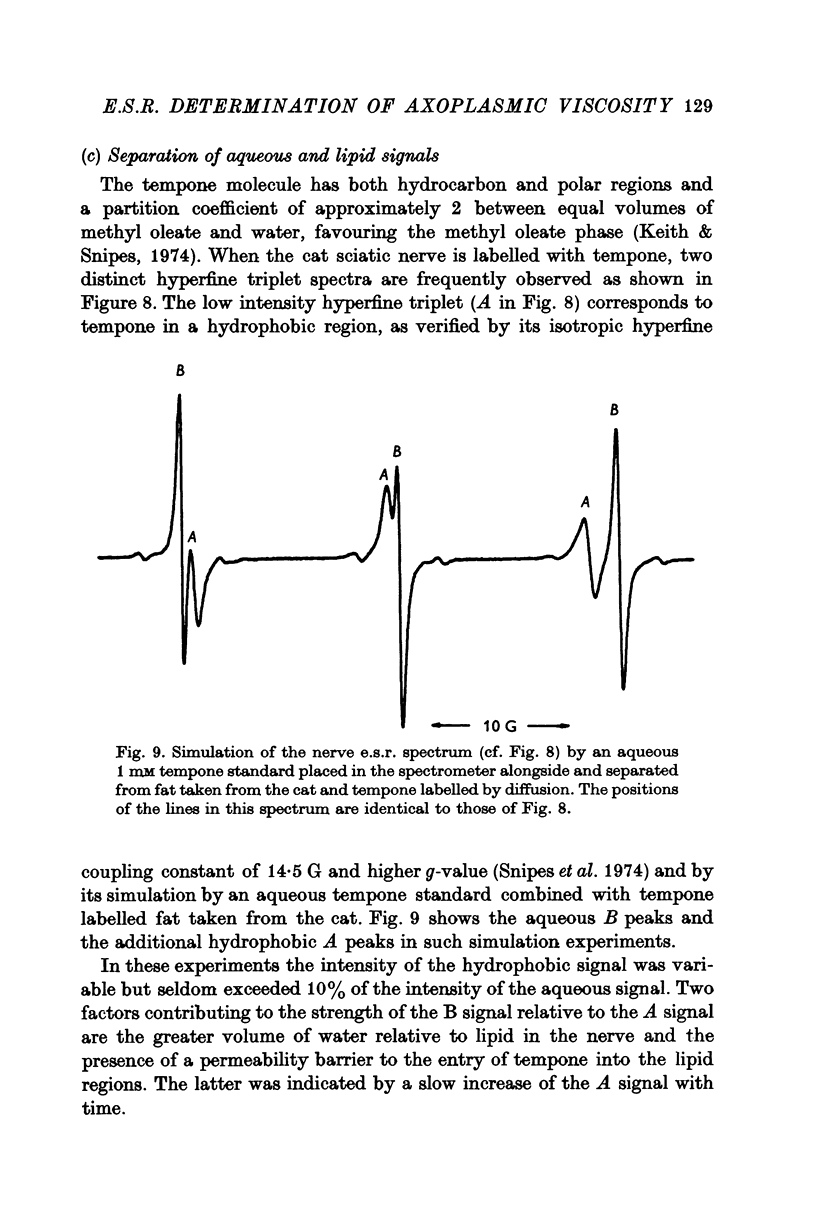
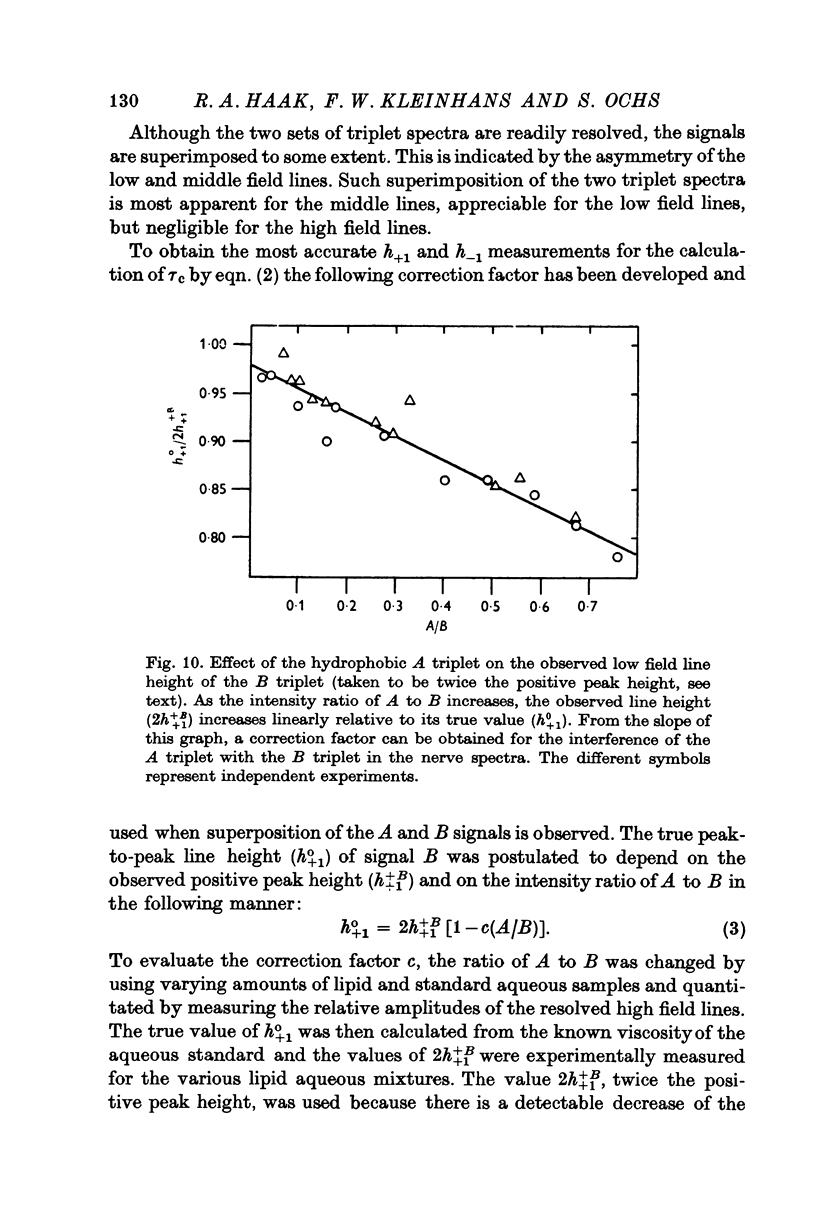
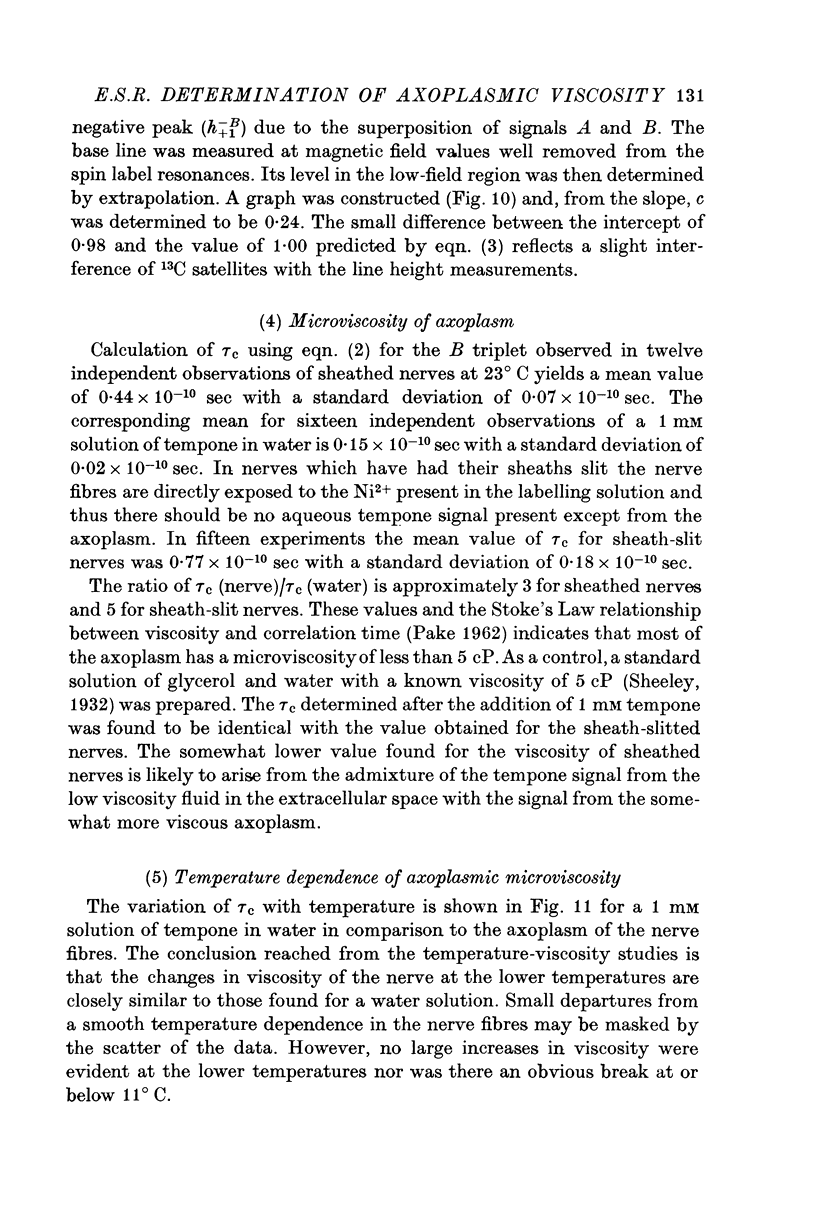
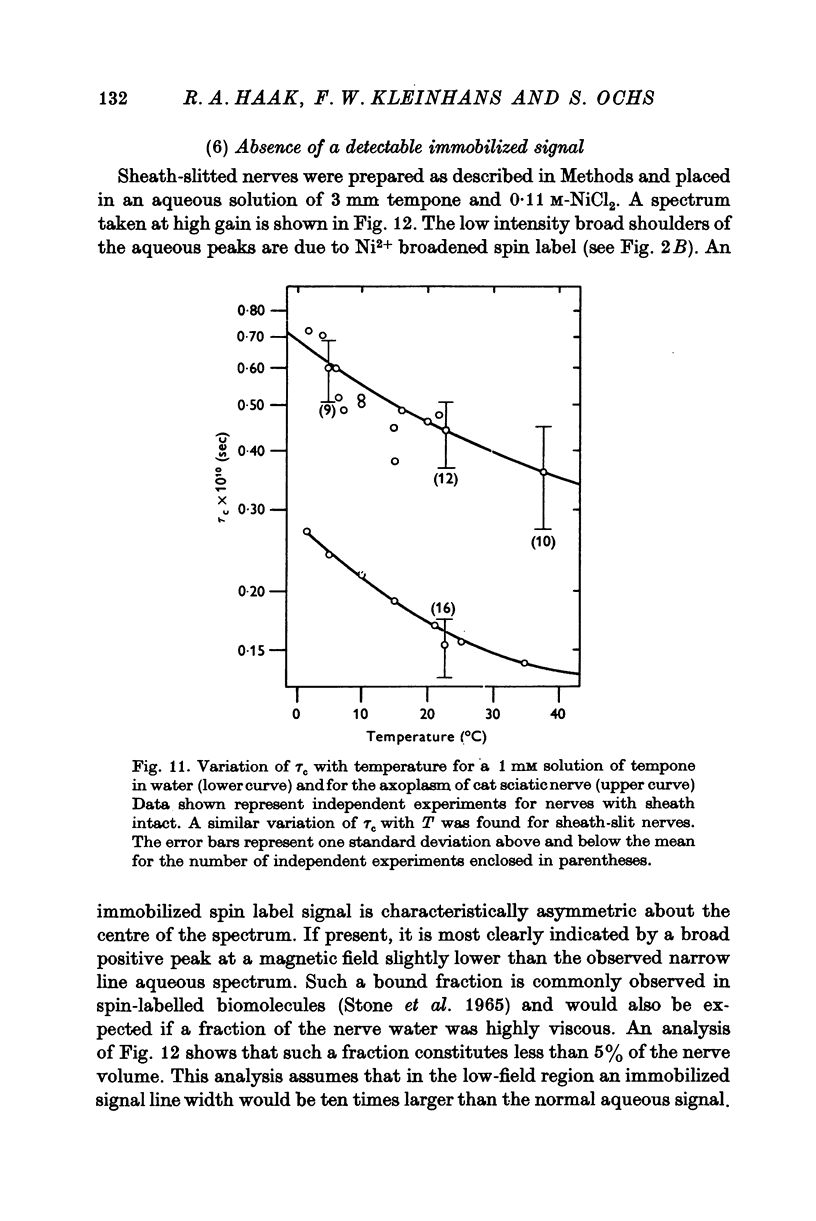
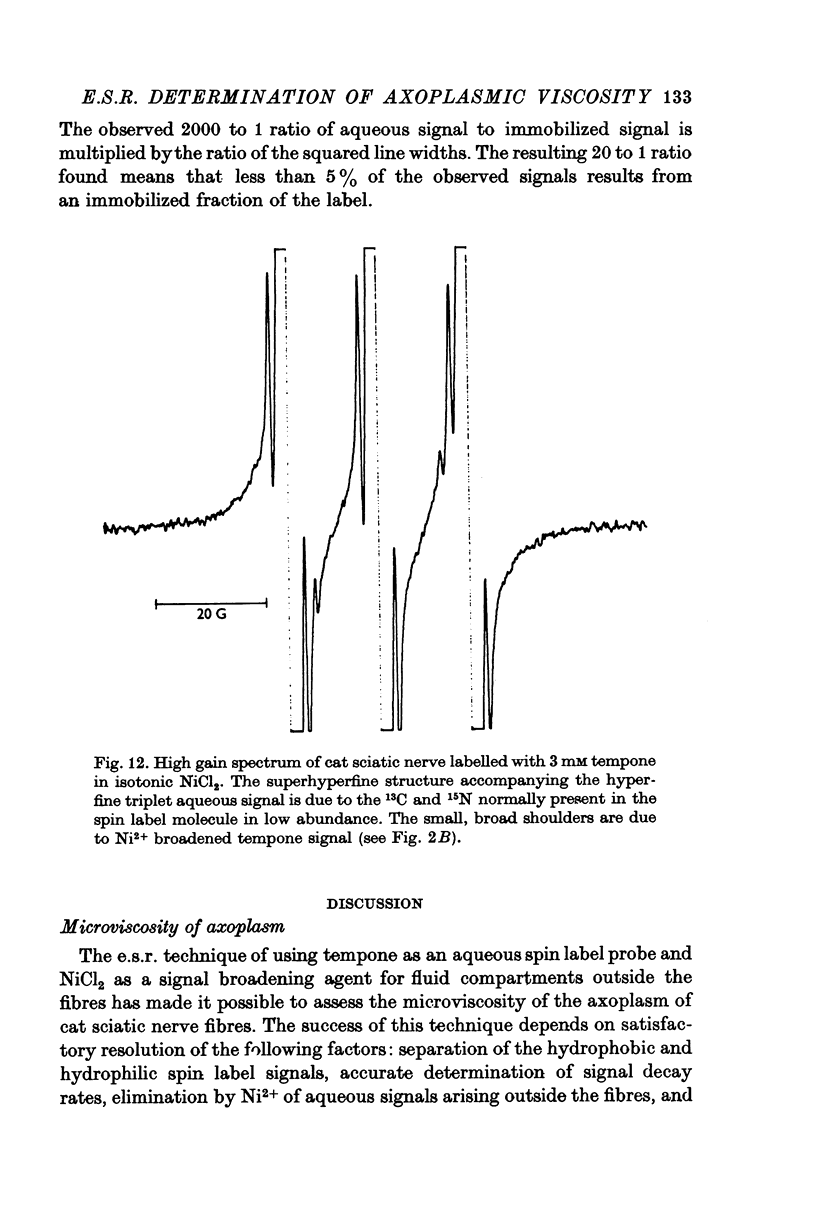
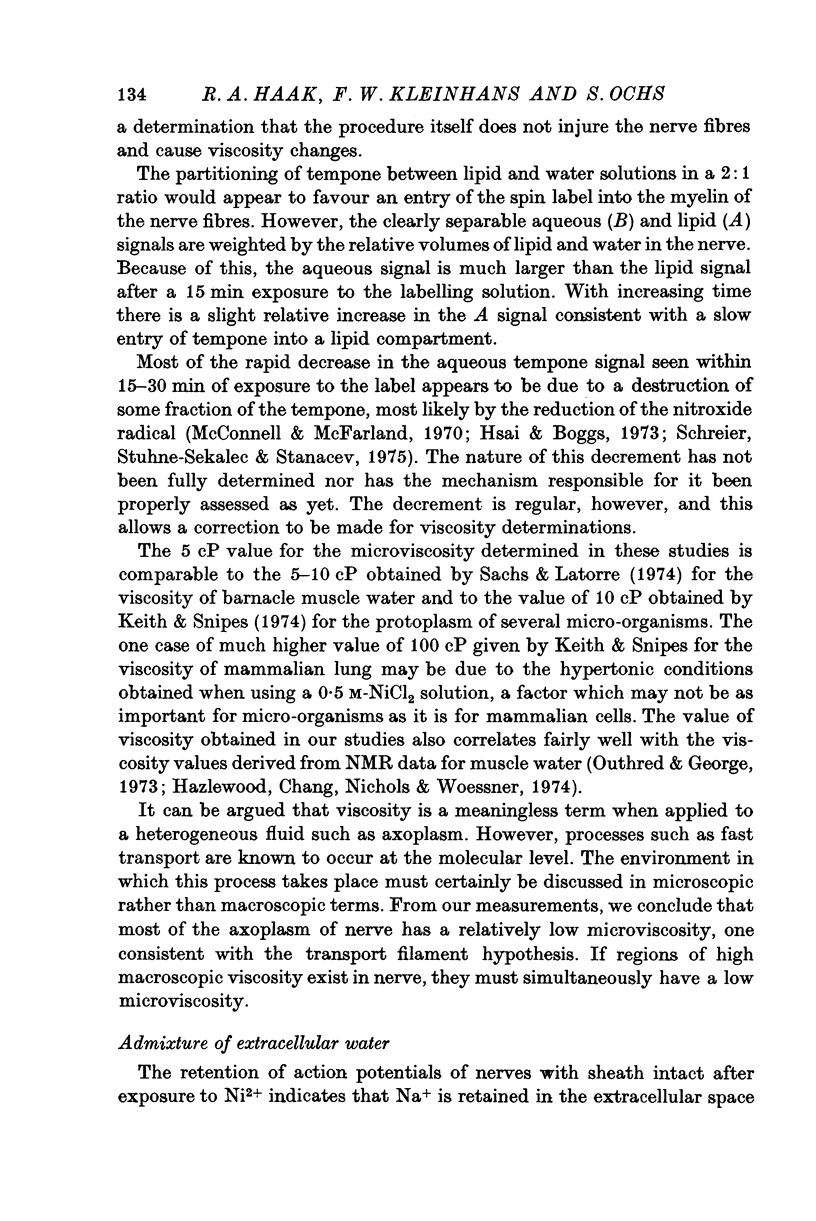
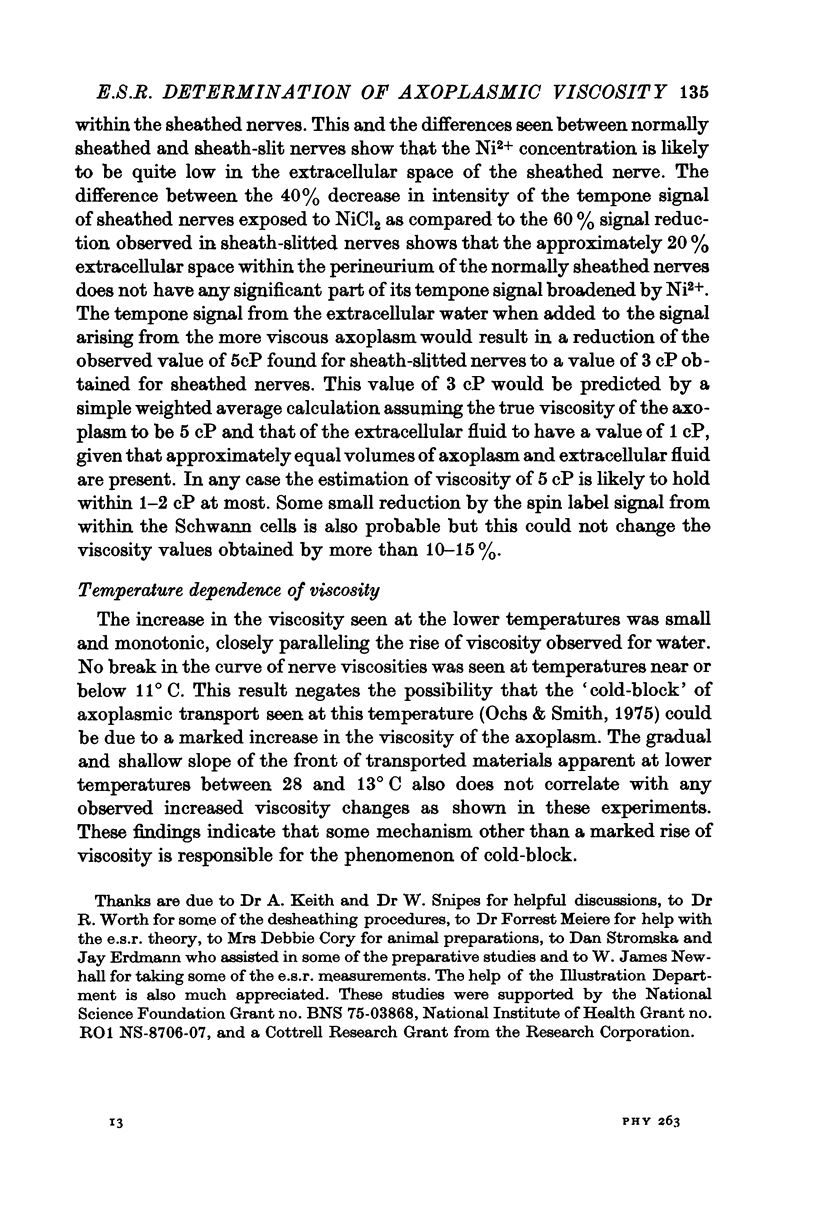
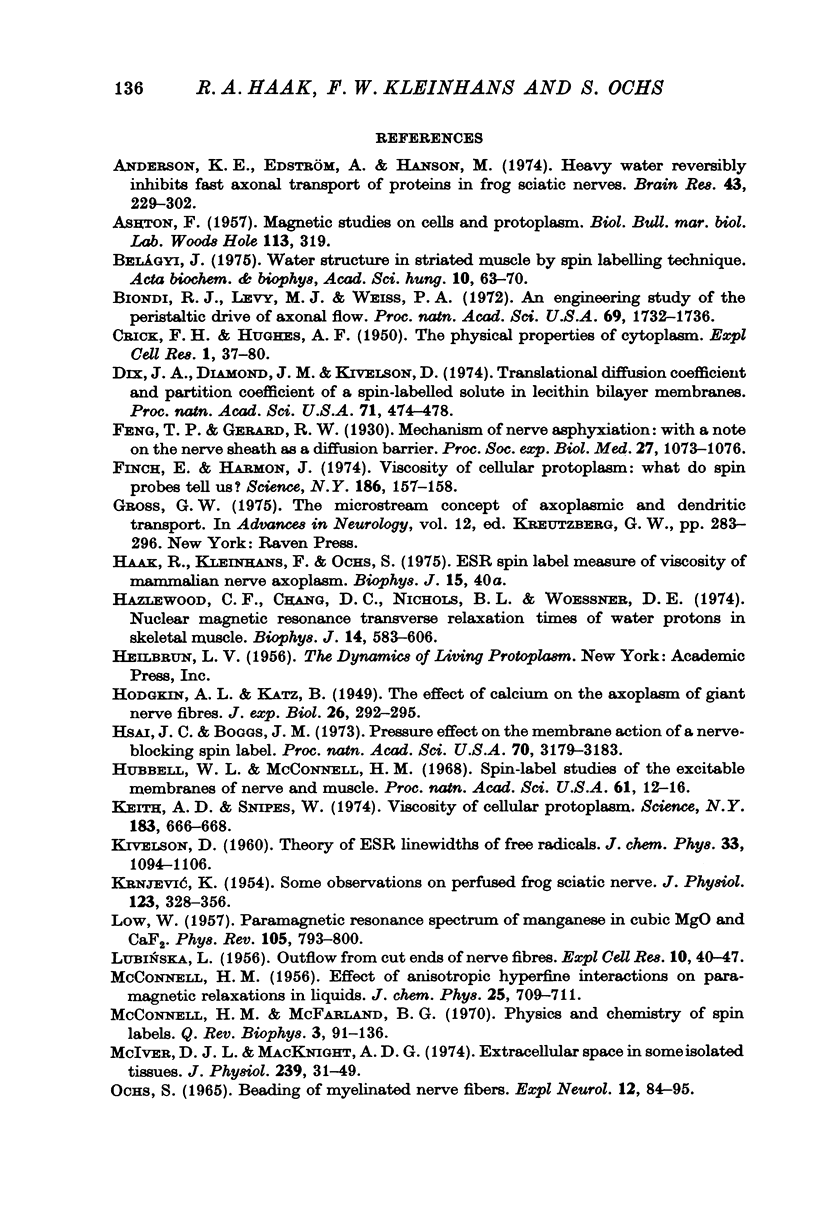
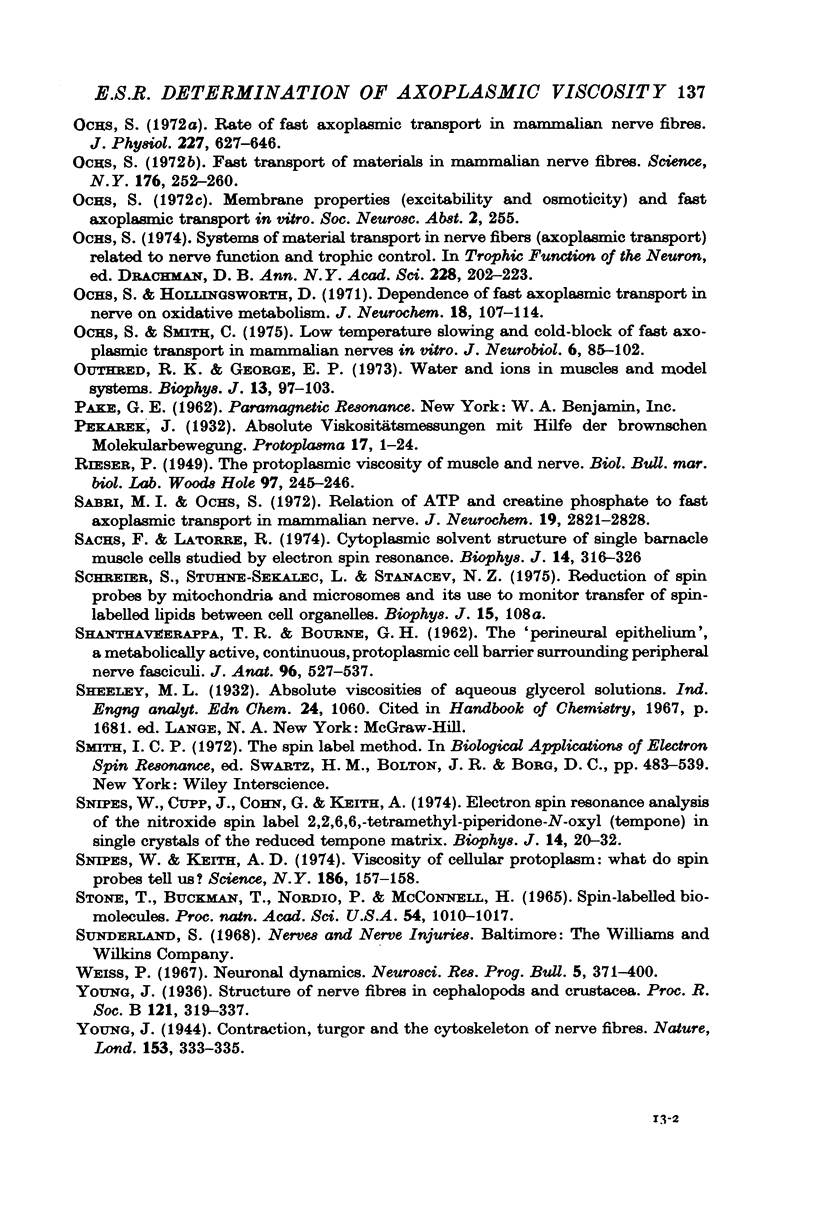
Selected References
These references are in PubMed. This may not be the complete list of references from this article.
- Anderson K. E., Edstrom A., Hanson M. Heavy water reversibly inhibits fast axonal transport of proteins in frog sciatic nerves. Brain Res. 1972 Aug 11;43(1):299–302. doi: 10.1016/0006-8993(72)90301-0. [DOI] [PubMed] [Google Scholar]
- Biondi R. J., Levy M. J., Weiss P. A. An engineering study of the peristaltic drive of axonal flow. Proc Natl Acad Sci U S A. 1972 Jul;69(7):1732–1736. doi: 10.1073/pnas.69.7.1732. [DOI] [PMC free article] [PubMed] [Google Scholar]
- Dix J. A., Diamond J. M., Kivelson D. Translational diffusion coefficient and partition coefficient of a spin-labeled solute in lecithin bilayer membranes. Proc Natl Acad Sci U S A. 1974 Feb;71(2):474–478. doi: 10.1073/pnas.71.2.474. [DOI] [PMC free article] [PubMed] [Google Scholar]
- Finch E. D., Harmon J. F. Letter: Viscosity of cellular protoplasm: what do spin probes tell us? Science. 1974 Oct 11;186(4159):157–158. doi: 10.1126/science.186.4159.157. [DOI] [PubMed] [Google Scholar]
- Gross G. W. The microstream concept of axoplasmic and dendritic transport. Adv Neurol. 1975;12:283–296. [PubMed] [Google Scholar]
- HODGKIN A. L., KATZ B. The effect of calcium on the axoplasm of giant nerve fibers. J Exp Biol. 1949 Oct;26(3):292-4, pl. doi: 10.1242/jeb.26.3.292. [DOI] [PubMed] [Google Scholar]
- Hazlewood C. F., Chang D. C., Nichols B. L., Woessner D. E. Nuclear magnetic resonance transverse relaxation times of water protons in skeletal muscle. Biophys J. 1974 Aug;14(8):583–606. doi: 10.1016/S0006-3495(74)85937-0. [DOI] [PMC free article] [PubMed] [Google Scholar]
- Hsia J. C., Boggs J. M. Pressure effect on the membrane action of a nerve-blocking spin label. Proc Natl Acad Sci U S A. 1973 Nov;70(11):3179–3183. doi: 10.1073/pnas.70.11.3179. [DOI] [PMC free article] [PubMed] [Google Scholar]
- Hubbell W. L., McConnell H. M. Spin-label studies of the excitable membranes of nerve and muscle. Proc Natl Acad Sci U S A. 1968 Sep;61(1):12–16. doi: 10.1073/pnas.61.1.12. [DOI] [PMC free article] [PubMed] [Google Scholar]
- Keith A. D., Snipes W. Viscosity of cellular protoplasm. Science. 1974 Feb 15;183(4125):666–668. doi: 10.1126/science.183.4125.666. [DOI] [PubMed] [Google Scholar]
- McConnell H. M., McFarland B. G. Physics and chemistry of spin labels. Q Rev Biophys. 1970 Feb;3(1):91–136. doi: 10.1017/s003358350000442x. [DOI] [PubMed] [Google Scholar]
- McIver D. J., Macknight A. D. Extracellular space in some isolated tissues. J Physiol. 1974 May;239(1):31–49. doi: 10.1113/jphysiol.1974.sp010554. [DOI] [PMC free article] [PubMed] [Google Scholar]
- OCHS S. BEADING OF MYELINATED NERVE FIBERS. Exp Neurol. 1965 May;12:84–95. doi: 10.1016/0014-4886(65)90100-7. [DOI] [PubMed] [Google Scholar]
- Ochs S., Hollingsworth D. Dependence of fast axoplasmic transport in nerve on oxidative metabolism. J Neurochem. 1971 Jan;18(1):107–114. doi: 10.1111/j.1471-4159.1971.tb00172.x. [DOI] [PubMed] [Google Scholar]
- Ochs S., Smith C. Low temperature slowing and cold-block of fast axoplasmic transport in mammalian nerves in vitro. J Neurobiol. 1975 Jan;6(1):85–102. doi: 10.1002/neu.480060112. [DOI] [PubMed] [Google Scholar]
- Ochs S. Trophic functions of the neuron. 3. Mechanisms of neurotrophic interactions. Systems of material transport in nerve fibers (axoplasmic transport) related to nerve function and trophic control. Ann N Y Acad Sci. 1974 Mar 22;228(0):202–223. doi: 10.1111/j.1749-6632.1974.tb20511.x. [DOI] [PubMed] [Google Scholar]
- Outhred R. K., George E. P. Water and ions in muscles and model systems. Biopolymers. 1973 Feb;13(2):97–103. [PubMed] [Google Scholar]
- Sabri M. I., Ochs S. Relation of ATP and creatine phosphate to fast axoplasmic transport in mammalian nerve. J Neurochem. 1972 Dec;19(12):2821–2828. doi: 10.1111/j.1471-4159.1972.tb03819.x. [DOI] [PubMed] [Google Scholar]
- Sachs F., Latorre R. Cytoplasmic solvent structure of single barnacle muscle cells studied by electron spin resonance. Biophys J. 1974 Apr;14(4):316–326. doi: 10.1016/S0006-3495(74)85918-7. [DOI] [PMC free article] [PubMed] [Google Scholar]
- Snipes W., Cupp J., Cohn G., Keith A. Electron spinal resonance analysis of the nitroxide spin label 2,2,6,6-tetramethylpipidone-N-oxyl (Tempone) in single crystals of the reduced Tempone matrix. Biophys J. 1974 Jan;14(1):20–32. doi: 10.1016/s0006-3495(74)85900-x. [DOI] [PMC free article] [PubMed] [Google Scholar]
- Stone T. J., Buckman T., Nordio P. L., McConnell H. M. Spin-labeled biomolecules. Proc Natl Acad Sci U S A. 1965 Oct;54(4):1010–1017. doi: 10.1073/pnas.54.4.1010. [DOI] [PMC free article] [PubMed] [Google Scholar]


